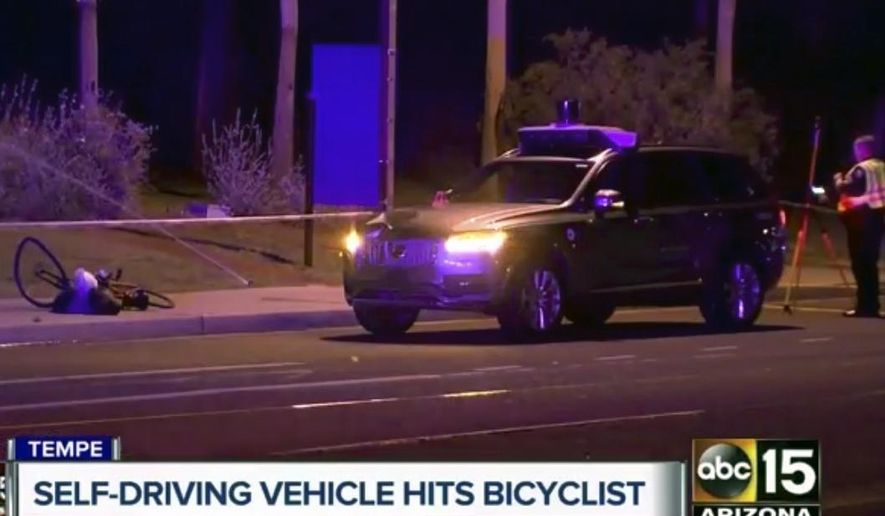OPINION:
Uber, on the heels of learning one of its cars that was operating in driverless mode had mowed down a bicycle-walking pedestrian and killed her, sent out a tweet that in essence said: Hey, we’re thinking of ya.
Sorry for the killing — almost, anyway.
But don’t worry. We’ve got researchers on the scene.
“Our hearts go out to the victim’s family,” tweeted Uber Comms. “We’re fully cooperating with @TempePolice and local authorities as they investigate this incident.”
And this, from Dara Khosrowshahi, Uber CEO: “Some incredibly sad news out of Arizona. We’re thinking of the victim’s family as we work with local law enforcement to understand what happened.”
What happened?
What happened was 49-year-old Elaine Herzberg was walking on the outside of a crosswalk in Tempe, Arizona, when an Uber car that had an operator inside but that was in driverless mode struck and killed her.
Now the driverless car industry is reeling. Bad press and all, you know.
“It’s a huge step back for them,” said Troy Spracklin, founder and chief executive of eBrake Technologies, a Canadian company that’s developed an app to lock cellphones to prevent distracted driving, speaking of Uber’s driverless program. “This tells us that perhaps the system hasn’t been properly vetted and isn’t ready for prime time.”
You think?
And the award for Most Understated Remark of the Year goes to …
Police, however, are already blaming the victim.
“It’s very clear it would have been difficult to avoid this collision in any kind of mode [autonomous or human-driven] based on how [the woman] came from the shadows right onto the roadway,” Tempe’s chief of police, Sylvia Moir, told the San Francisco Chronicle. “It is dangerous to cross roadways in the evening hour when well-illuminated managed crosswalks are available.”
Yes, dangerous and deadly, particularly when driverless cars are on the road.
“Driverless cars are nowhere near as clever as you’ve been led to believe,” blasted one headline from The Telegraph.
And again — meet the runner-up for Understated Remark of the Year.
Uber has suspended its driverless program, while other companies test-marketing their own autonomous vehicles have taken note. The National Transportation Safety Board, meanwhile, has flocked to Tempe to investigate and see what percentage of blame for the fatality rests with Uber versus what percentage with the environment — versus what percentage with the victim. Great. Maybe the information gleaned can be combined with the data collected from an Uber driverless car-flip that occurred in Tempe a year ago.
And maybe all that information can be fed into the data system that recorded a fatality that resulted from a crash of a Tesla vehicle operating in autopilot mode in Florida in May of 2016. The autonomous vehicle program relies on Big Data to help it achieve success, after all — so the more wrecks, the more injuries, the more fatalities, the more the machines driving the vehicles can learn.
In company speak, it’s like the guy in Florida and the woman in Tempe, took one for the team. Yay team driverless.
But the larger lesson here is this: Driverless cars are far from perfect. And if you get killed by one, don’t expect a rush of apologies from the companies — or, even admission of culpability. There’s much too much technological gold on the line to risk the legal repercussions and bad public relations and press that could come.
• Cheryl Chumley can be reached at cchumley@washingtontimes.com or on Twitter, @ckchumley.




Please read our comment policy before commenting.